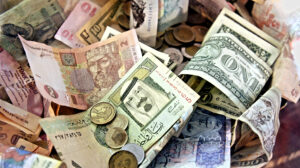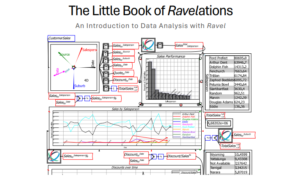In our last episode of “What is money?”, we left off with…
Now, for the first time, people travel. Some villagers from various villages were conscripted into the Army and sent off to fight people in neighboring armies.
What is money? The story of the origin of money, continued
These soldiers need stuff. They need food, clothing, sword sharpening, maybe new swords, shields, etc.
But the credit system doesn’t work with these guys. The credit system is based on the people participating in it always being around. In the old credit system, you knew you would be repaid, because the guy who owes you is your neighbor.
Now you have some burly guy with a sword who needs stuff. If you give it to him, that way you’ve done for your neighbors for forever, you’ll never be paid back. That burly guy with the sword is leaving town.
This created a problem for the King. He needed a way to provision the army, without requiring an army of logistics people to do so.
The answer (and this happened over and over and over again in the ancient world) was the co-invention money and taxes. Which by the way, go together like peanut butter and jelly, potatoes and buttermilk, beans and corn, raw fish and rice, Abbott and Costello, etc., etc. You get the idea.
Money and taxes show up together, over, and over, and over in early human societies.
The King decreed that silver was money. It was a convenient form of money as it was easily carried and easily divided into various values.
The King took ownership of all the silver mines in the kingdom (as after all, he IS the King), and had coins made with his picture on them.
The King paid people in silver coins, and required them to give him some back every year.
At this point, you might ask, if the King owns all the silver mines, and all the silver belongs to him, why did he give it out, only to take part of it back once a year? Why does that make sense?
The answer is….. The King required everyone in the kingdom pay taxes, and he paid his soldiers in silver.
This immediately created demand for those silver coins. Everyone needed them to pay taxes. To get them, you had to sell something to a soldier.
Suddenly, everyone in the kingdom has a keen interest in obtaining the silver coins. Everyone has an interest is selling something to the soldiers.
This is how money works to this day, for real
Money is issued by a government, who taxes it back, in order to provision itself with whatever it thinks it needs. The government gets what it gets, from the larger economy, by virtue of having created demand for money, through taxation.
In summary:
- Money is state generated.
- Taxes create demand for money.
- Because taxes are coercive (pay or be punished).
Money is tax credits.
This is true of US Dollars, British Pounds, Euros, you name it.
Money and taxes go together. One did not show up without the other.
Money is first and foremost, tax credits we members of an economy need to pay our taxes.
Beyond that, money is ALSO a medium of exchange, a standard of value, and a unit of account.
Don’t believe me?
Maybe you’ll listen to this guy, Warren Mosler. He’s the guy who is credits with initially saw how this works.
While he does have a BA in Economics, he was NOT an economist, he was a Wall St bond trader when he figured this out.
He was subsequently awarded an honorary P.hD. in economics for seeing things classically trained economists missed.
The video below show him explaining how currency is at it’s core a tax credit and what I find to be most interesting about it is it took a bond trader to see beyond what economists saw in terms of what is it that makes money money.



